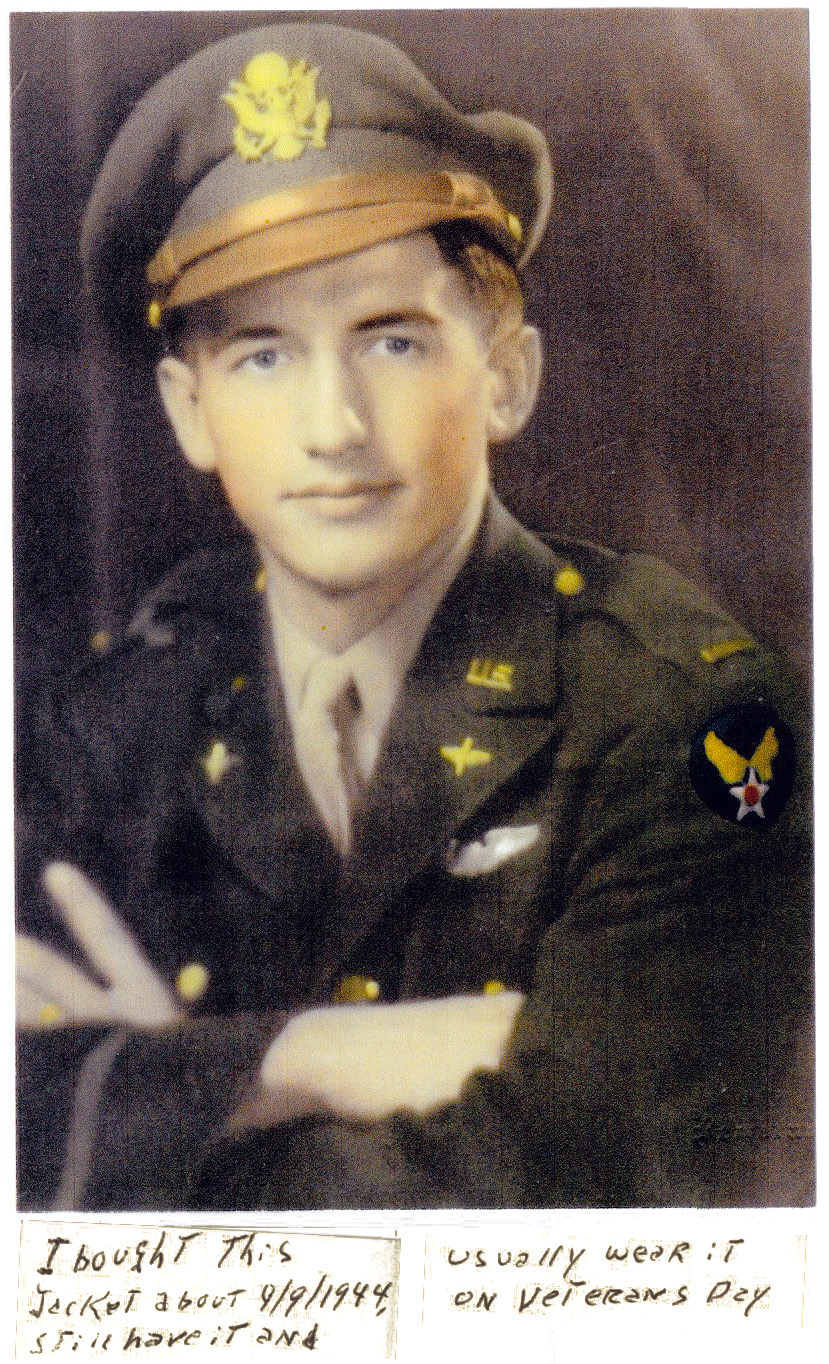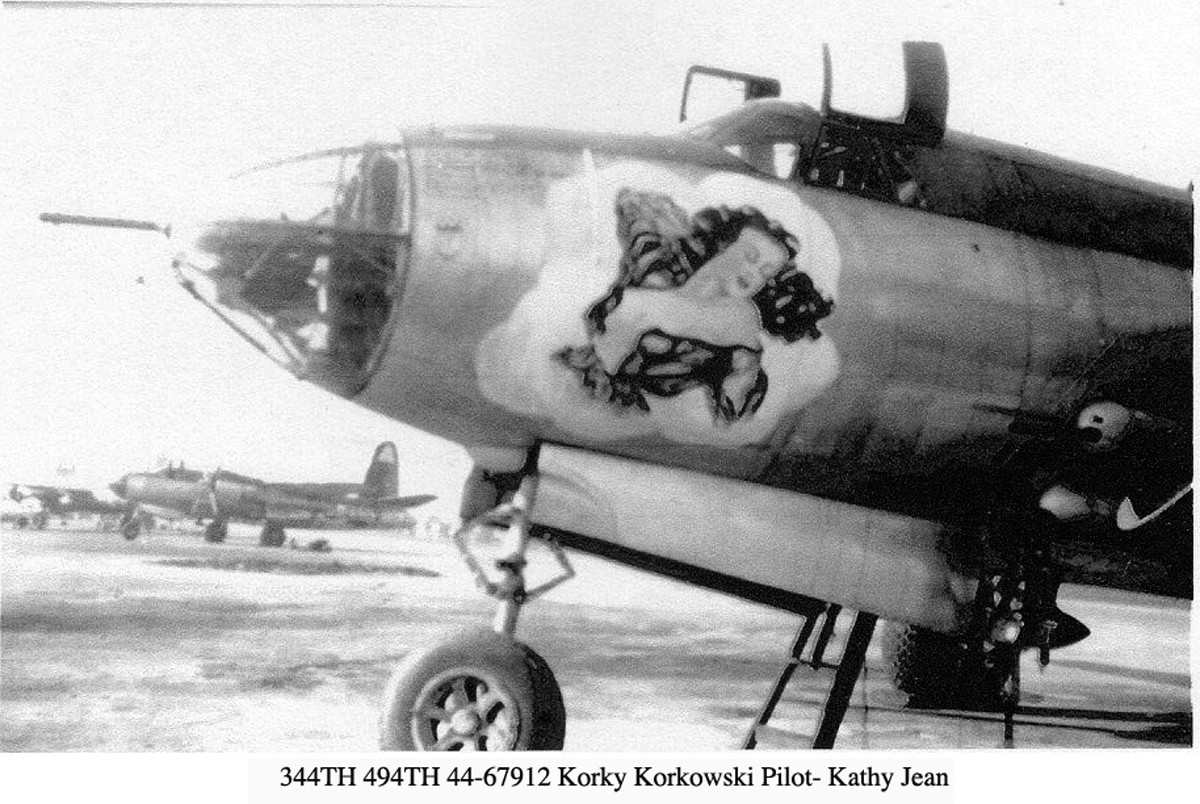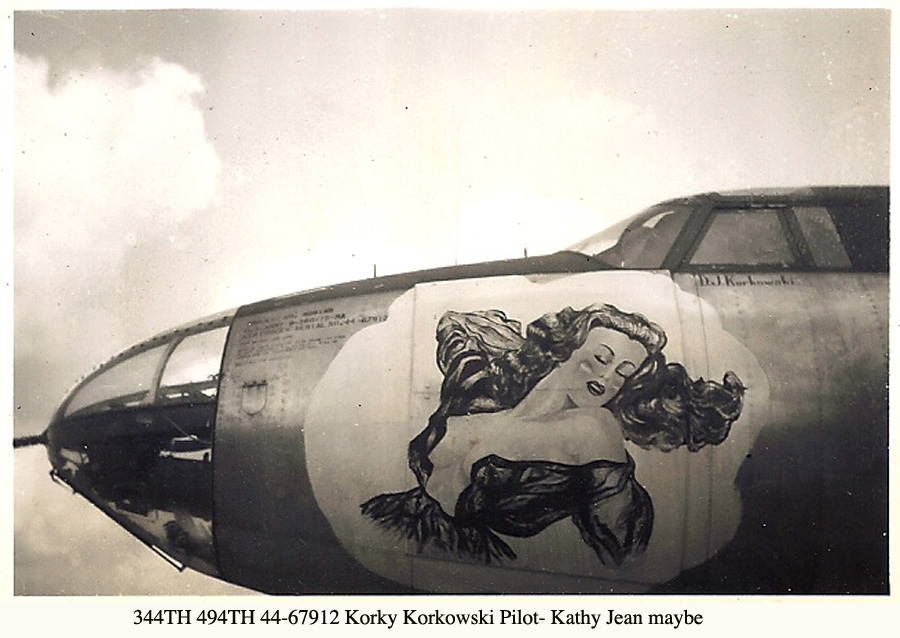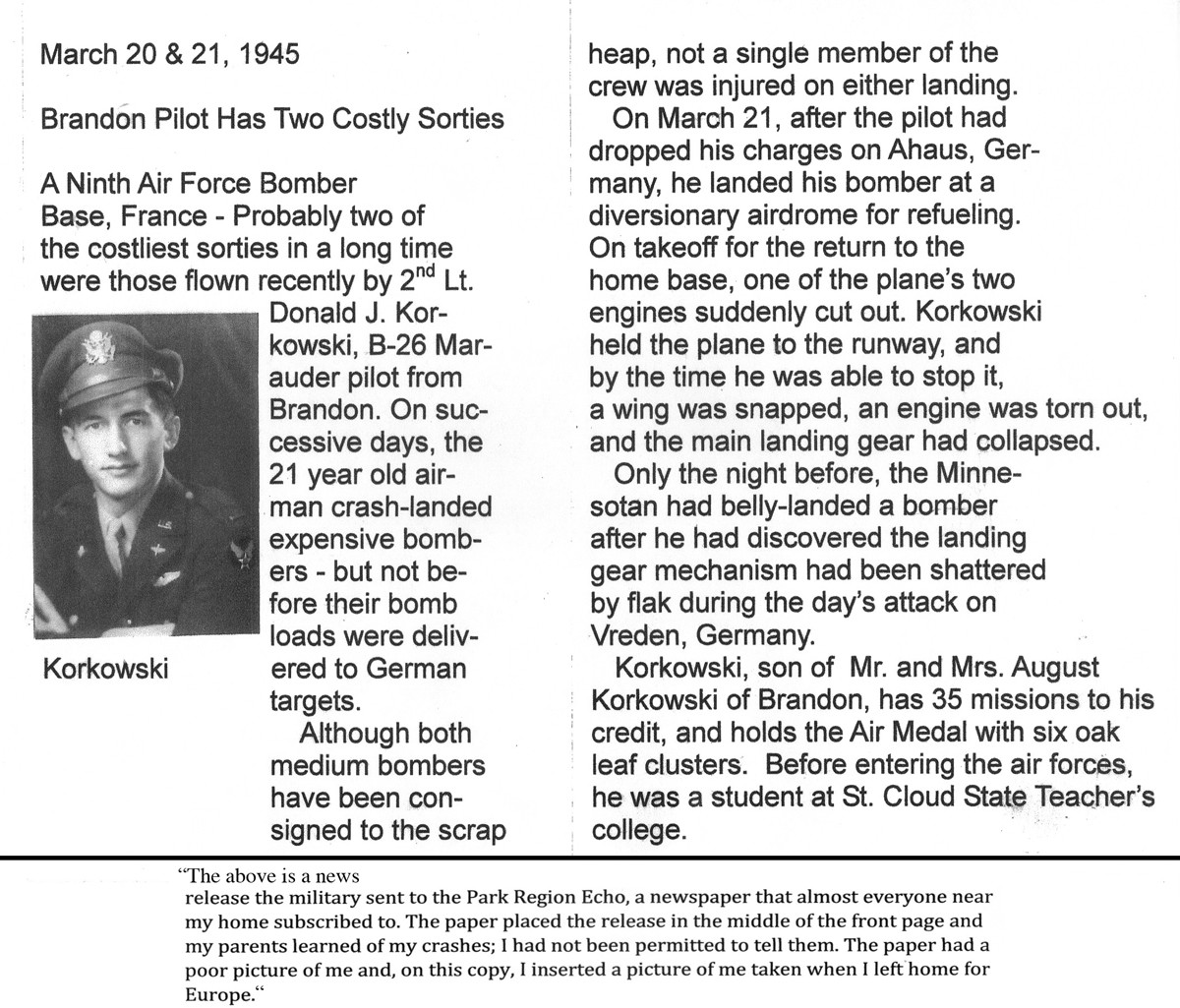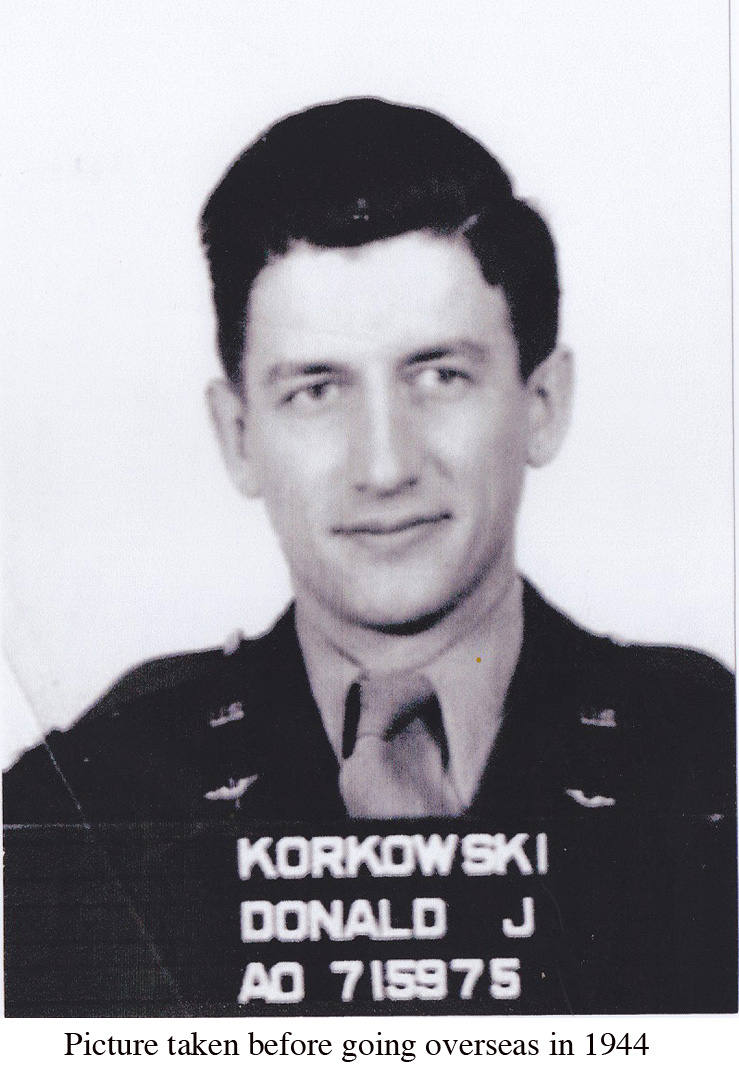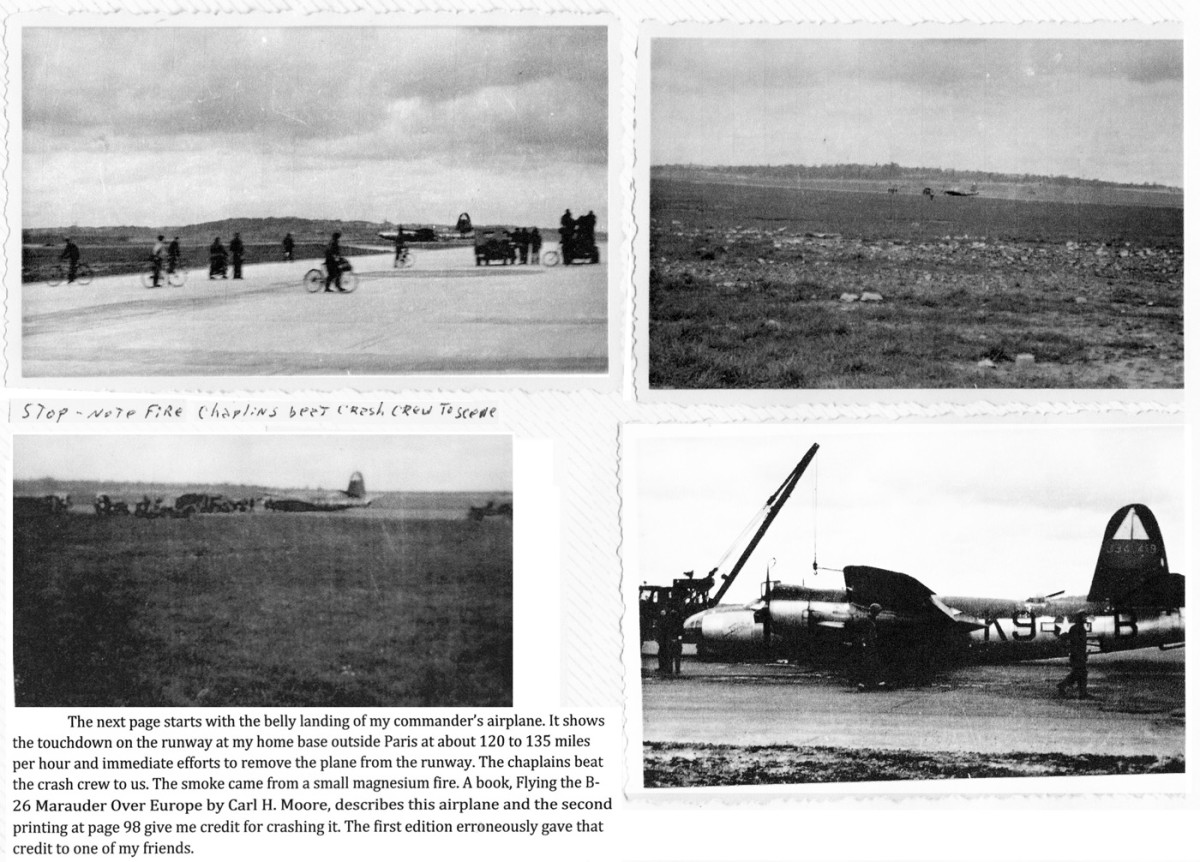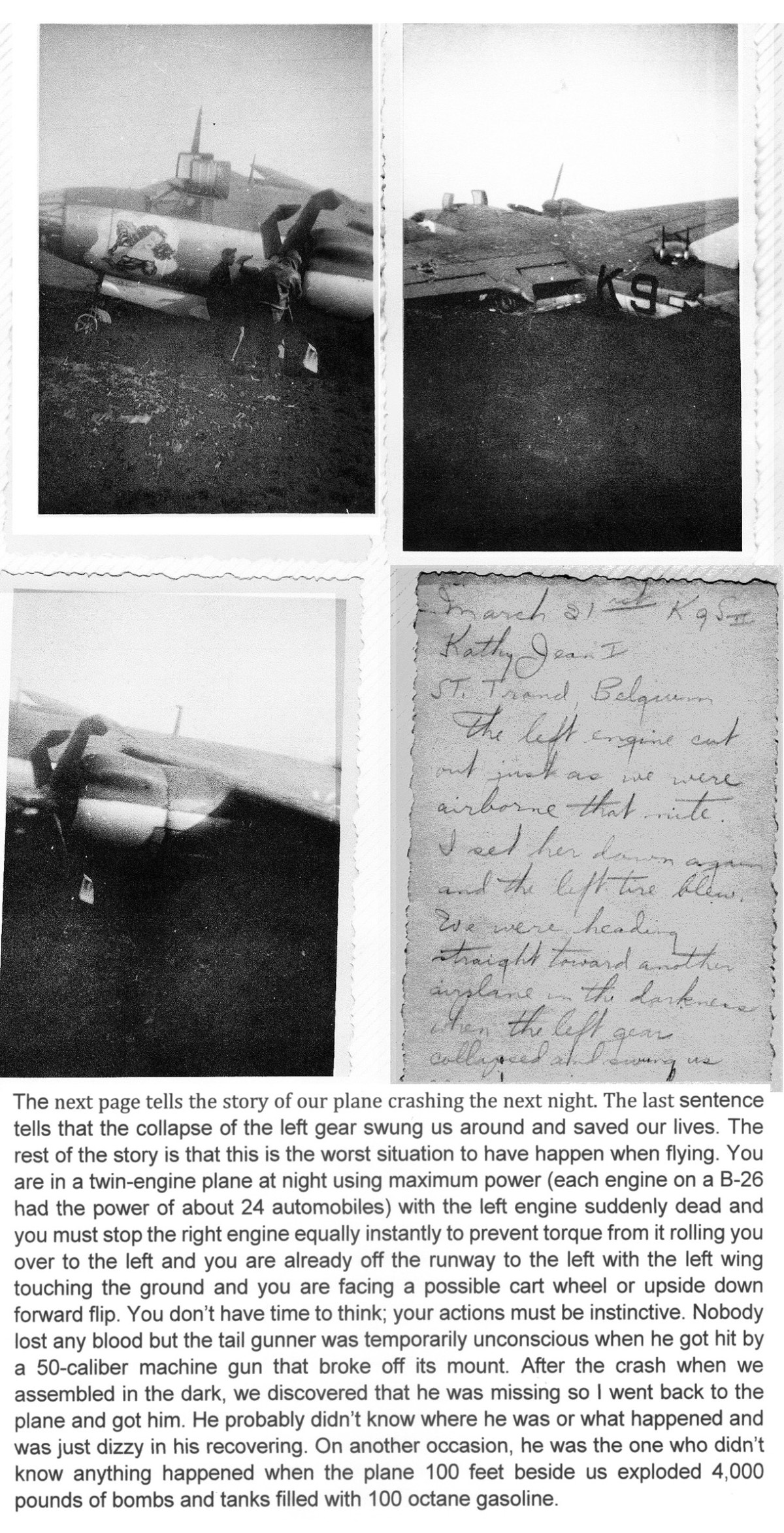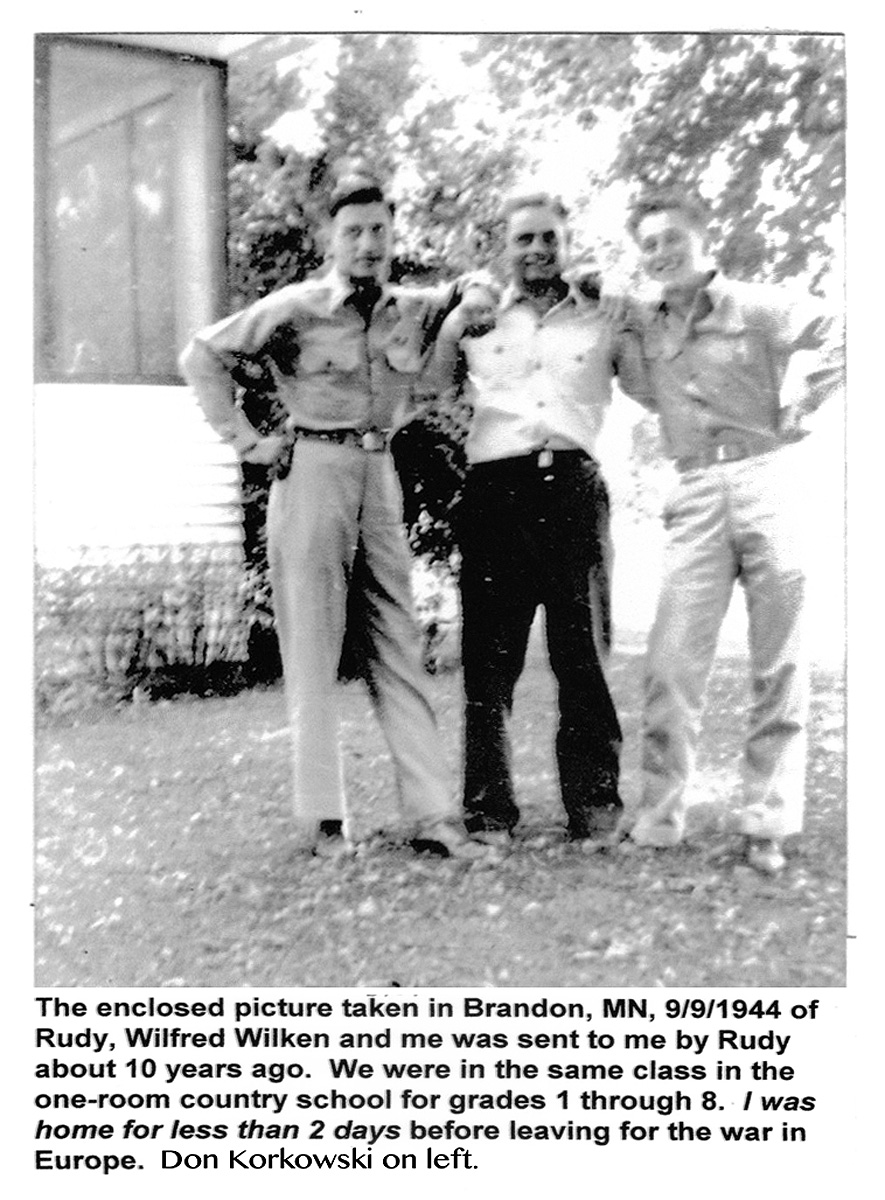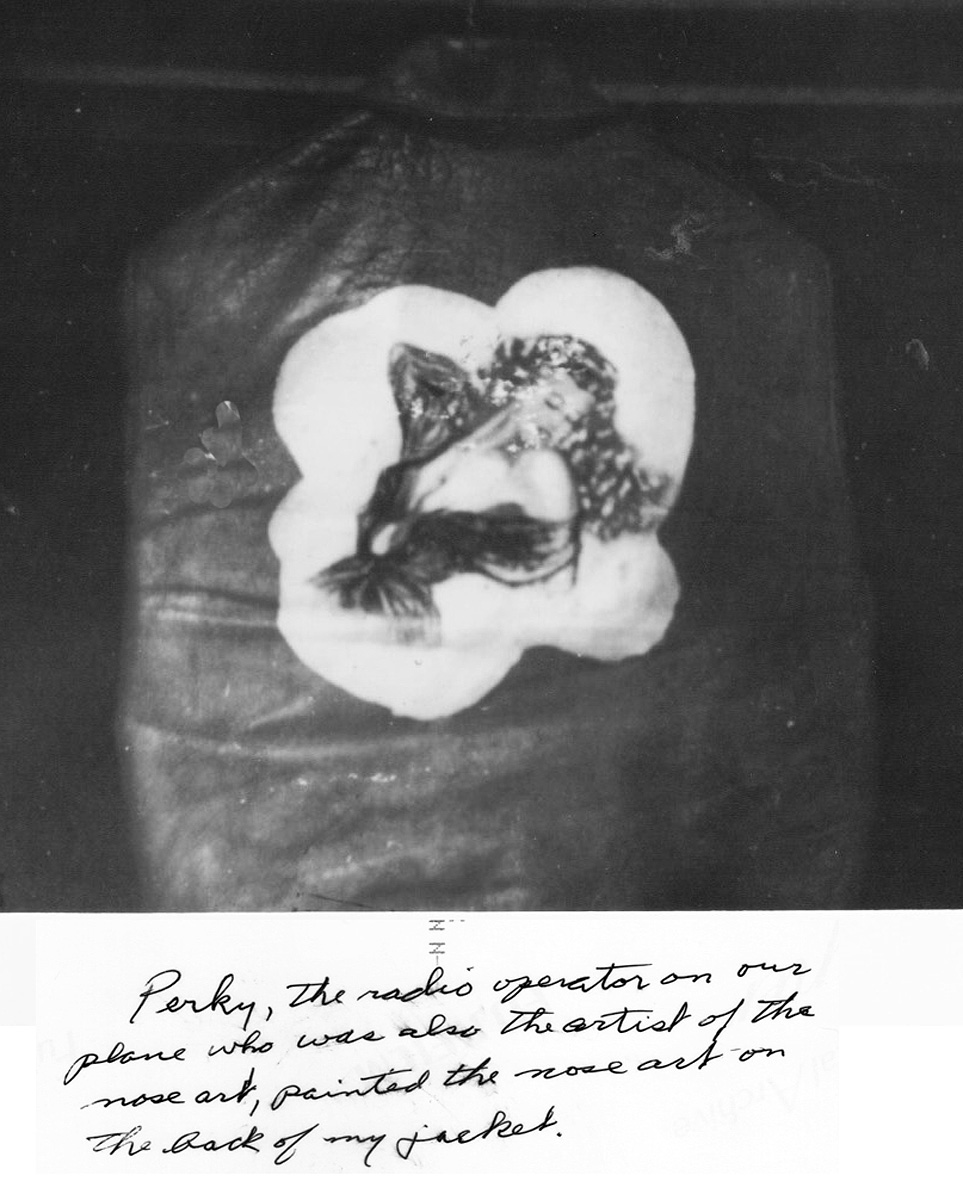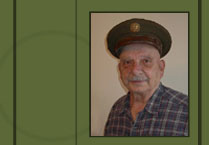My Letter from Don Korkowski
Carl,
Here are a few comments about the enclosed pictures. They are all yours to keep.
The military didn’t dislike me; they were just too busy to get things done. In fact, they invited me to move into administration to help them and fly less or no more missions. I turned them down because I had never worked in an office, the government had spent a lot of money training me to fly, and I wanted to become a commercial airline pilot when the war was over. As it turned out I couldn’t pass any physical when the war was over. Then I was recalled for 21 months in the Korean War anyway.
I never received any military recognition for taking my crew through 2 crashes without spilling any blood. At least 2 of us were hospitalized but I don’t remember how long. I know that I returned to flying missions after 18 days. All my medical records were lost in a fire. I think the fire was in St. Louis. After the second crash, the military was embarrassed because I had 36 missions and had not been promoted so they delayed my signing the crash reports until they promoted me.
Now let us go to the pictures.
The first picture starts with the primary plane, a Ryan I think, and my teaching pilot with me beside him and 4 more of his students.
Then there is a picture of my crew beside a B26.
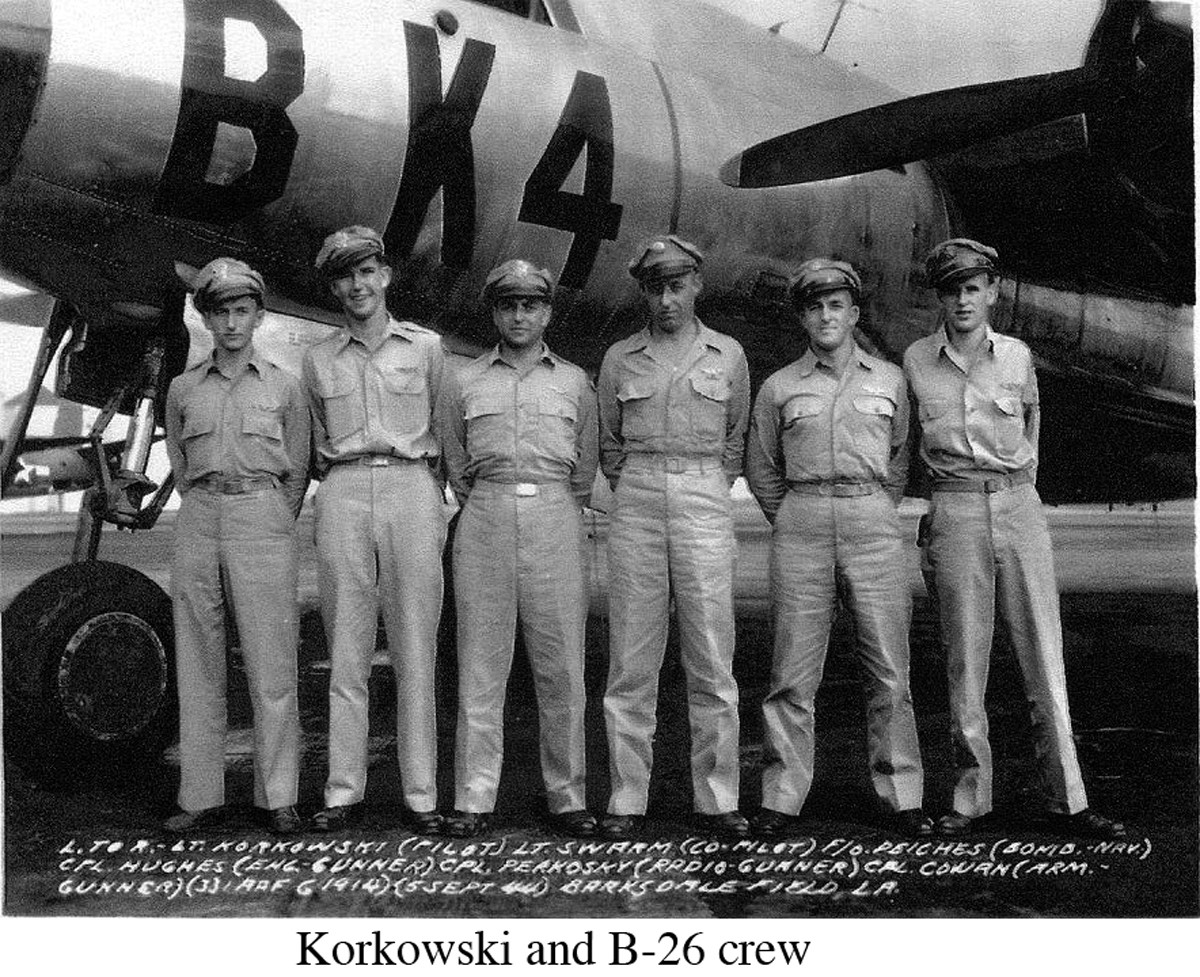
At the bottom is a picture of the nose art on our plane.
On the next page is the news release the military sent to the Park Region Echo, a newspaper that almost everyone near my home subscribed to. The paper placed the release in the middle of the front page and my parents learned of my crashes; I had not been permitted to tell them. The paper had a poor picture of me and, on this copy,
I inserted a picture of me taken when I left home for Europe.
The next page starts with the belly landing of my commander’s airplane. It shows the touchdown on the runway at my home base outside Paris at about 120 to 135 miles per hour and immediate efforts to remove the plane from the runway. The chaplains beat the crash crew to us. The smoke came from a small magnesium fire.
A book, Flying the B26 Marauder Over Europe by Carl H. Moore, describes this airplane and the second printing at page 98 give me credit for crashing it. The first edition erroneously gave that credit to one of my friends.
The next page tells the story of our plane crashing the next night. The last sentence tells that the collapse of the left gear swung us around and saved our lives. The rest of the story is that this is the worst situation to have happen when flying . You are in a twin-engine plane at night using maximum power (each engine on a 8-26 had the power of about 24 automobiles) with the left engine suddenly dead and you must stop the right engine equally instantly to prevent torque from it rolling you over to the left and you are already off the runway to the left with the left wing touching the ground and you are facing a possible cart wheel or upside down forward flip. You don’t have time to think; your actions must be instinctive. Nobody lost any blood but the tail gunner was temporarily unconscious when he got hit by a 50-caliber machine gun that broke off its mount. After the crash when we assembled in the dark, we discovered that he was missing so I went back to the plane and got him. He probably didn’t know where he was or what happened and was just dizzy in his recovering.
On another occasion, he was the one who didn’t know anything happened when the plane 100 feet beside us exploded 4,000 pounds of bombs and tanks filled with 100 octane gasoline.
The next two pictures were taken just before going over to war
and then two were taken in recent years.
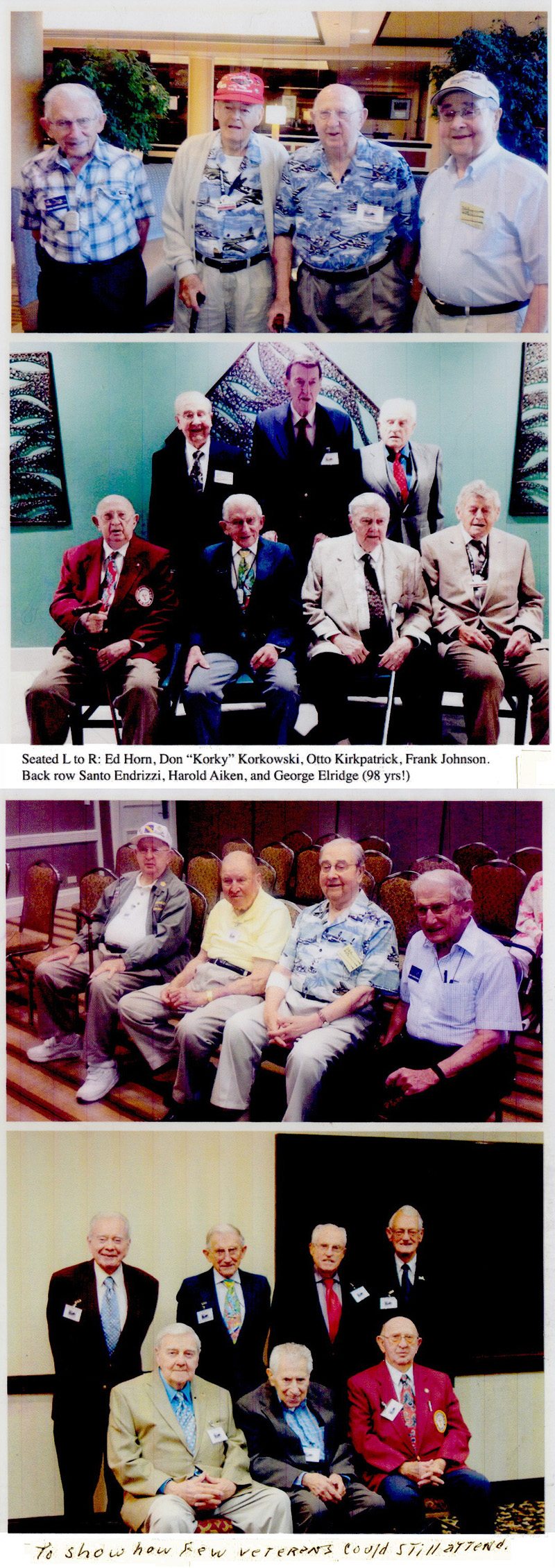
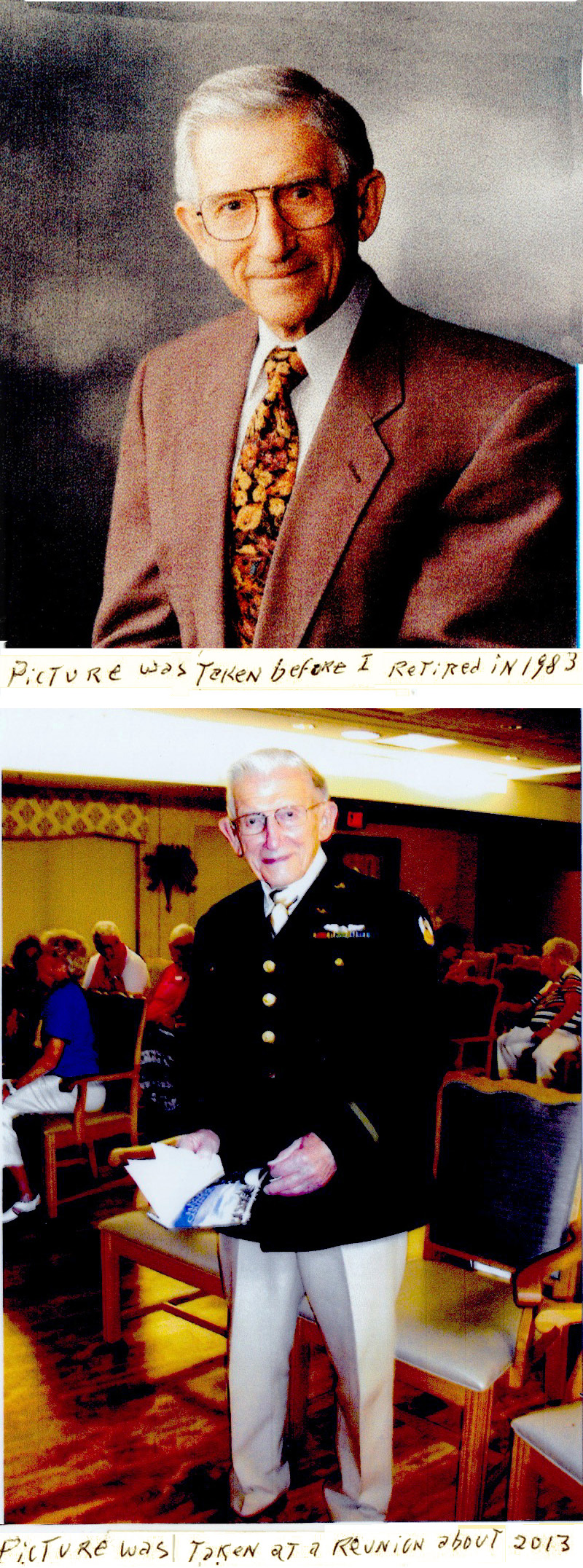
Then a page awarding me the 133 membership in the Benevolent Order of Bended Blades.
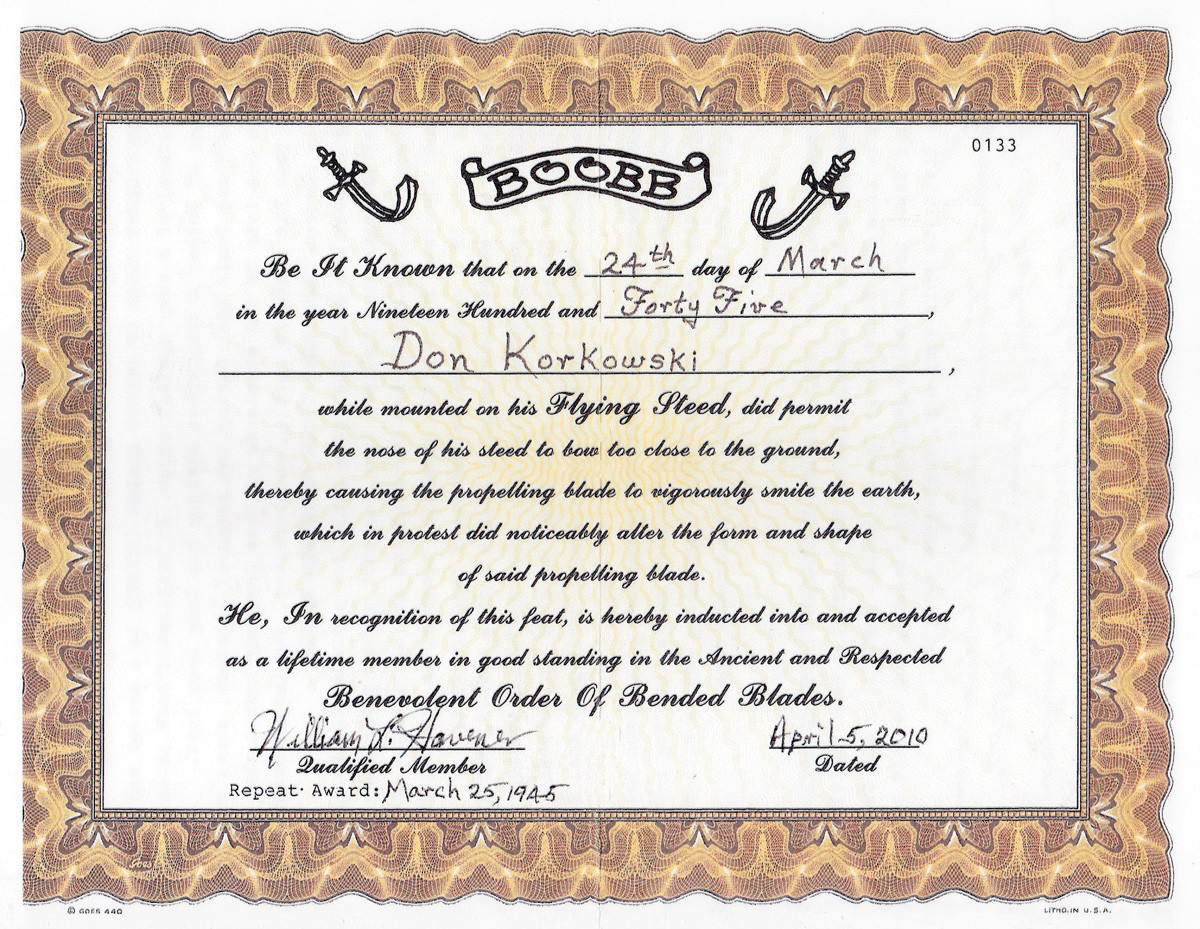
Then there is a 4X6 picture of the plane directly in front of us being shot down at the same moment that the plane beside us exploded.
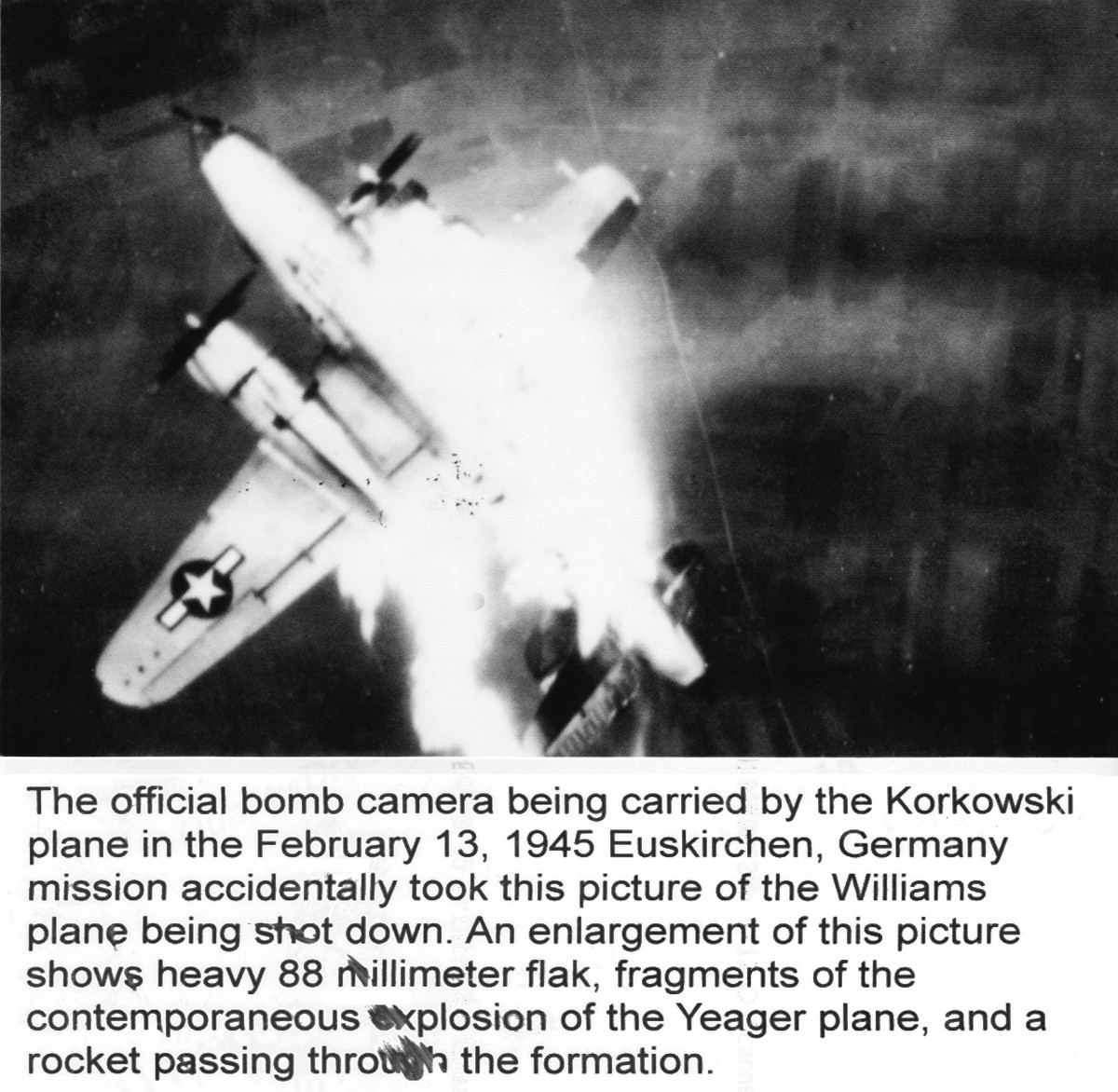
Lastly there is a picture of the back of my leather jacket with a painting placed there by my radio gunner who created the picture.
Sincerely,
Don Korkoski
